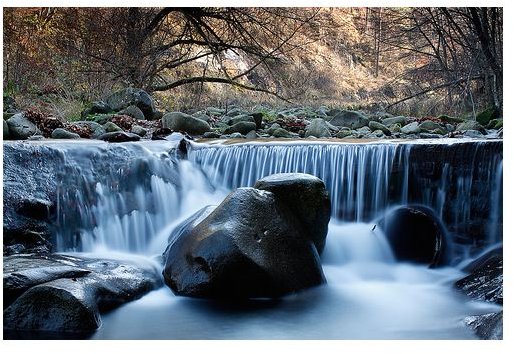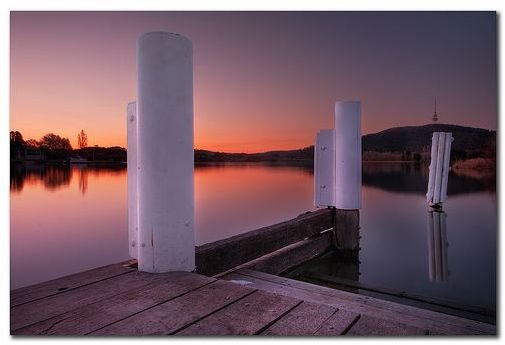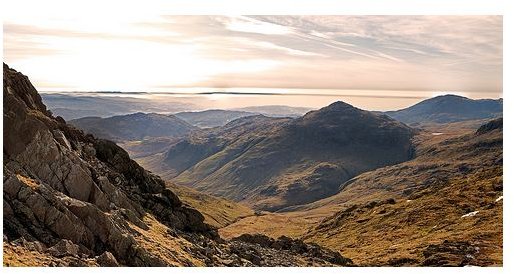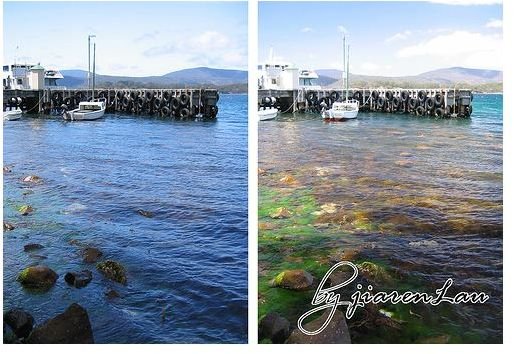What are The Best Camera Filters for Nature Photos?
Polarizing Filters
A polarizing filter is one of the most effective and useful filters while shooting in the sun. Polarizing filters tend to cut out the reflections and glares that pop up while shooting in the sun and it also brings out the color saturation which is usually dumbed down by the bright sun. As a nature photography shooter, the polarizing filter will allow you to incorporate deep blue skies and water bodies as well as cut out unwanted reflections in landscape photographs. Remember that polarizers will only work while shooting at a 90 degree angle to the sun or light source and they will eliminate some light, so remember to adjust your exposure accordingly.
Image: Jiaren
There are two types of polarizing filters, circular and linear polarizers. Linear polarizers were designed for older manual focusing cameras and don’t perform well with modern digital SLRs. Go for a circular polarizer from manufacturers like Hoya, B+W, Singhray, or Tiffen. These offer the best polarizing quality and also offer additional protective coatings for safeguarding the lens. As far as polarizers go, pricier brands offer better quality and protection. Brands like the Singhray filters offer single filters capable of serving as polarizers and ND filters, saves space on the lens and allows usage of additional filters. Using adapter based filters like the Cokin P-filter system will allow you to add additional filters and use them with any lens (provided you have an adapter).
Neutral Density (ND) Filters

A neutral density filter reduces the amount of light entering the camera and therefore allows the use of lower shutter speeds. Why would you want to use slow shutter speeds on a bright day? Well, photography is all about looking at your environment in creative ways and trying to compose images that emphasize something that you want to. Let’s say that you are looking to depict motion with a motion blur on a bright sunny day - mostly in nature photography this involves water bodies, you need slower shutter speeds to blur the motion but still need a correct exposure. A ND filter will allow you to get slower shutter speeds and maintaining the correct exposure by cutting out light.
Image: dimodi
A graduated ND filter is capable of partially cutting out the light in a frame. If you are looking to shoot sunsets and sunrises in a perspective where you don’t want to make silhouettes out of foreground objects then a graduated ND filter is the way to go. Positioning the tinted part of the graduated ND filter in the region where you want to cut down on the light will reduce exposure selectively in that particular region and the rest would be normally exposed.
Warming Filters

The mood of an image determines how an audience receives an image. Though today’s digital darkrooms (Aperture, Lightroom and the likes) do allow you to add filter effects, it’s better to get your image as complete as possible in-camera. Adding a filter using Photoshop or simpler apps like CameraBag only comes second to fixing a filter on your camera and capturing the image that you want. Warming filters add “mood” to an image, nobody likes a “cold” portrait or landscape for that matter. The warming filter, as the name suggests, adds warmth to your image by removing the bluish cast. Images shot during a misty day, even images shot in snow or fog, overcast sunlight and the likes tend to drive the color temperature of an image to the colder regions making the image less appealing or slightly off. The warming filter removes the coldness (blue cast) and also makes skin color appealing and pleasant on the eyes.
Image: stage88
Warming filters are available from several manufacturers including Cokin, Tiffen and Hoya. As with any photography equipment, the pricier ones are built better and offer marginally better images.
UV/Skylight Filters

The UV filter is more of a safety precaution than a photography tool. Lenses are the most precious of photography gear and keeping them safe and clean is a good practice. Having a filter screwed onto your lens safeguards the lens from scratches and bumps, in the case of a UV filter it also protects your lenses from the damaging UV radiations from the sun. Professional lenses are manufactured with protective coating to prevent UV damage but having a UV filter doesn’t hurt.
Image: trialsoflife
UV filters are generally cheap, the good ones which produce very little or no distortion or color contamination can cost a bit more. Filters from companies like Hoya, come with multicoated protection offering strong UV protection and are photographically neutral. Manufacturers such Tiffen, Cokin also make good UV filters.
Skylight filters are used as replacements for UV filters. They also tend to cut out the UV region of the light spectrum and also add a slight tint to the image to make a bit more warm. Unlike UV filters, skylight filters do add a slight hue to your image and therefore not photographically neutral. These days you can always quickly remove or modify this color tint in any digital photography workflow application but if you don’t prefer doing it stay away from skylight filters and go the UV filter way.
These are the best camera filters for nature photos. To learn more about this type of photography, please read A Guide to Nature Photography.
